
HOW TO VISIT JBG AT THE FARMERS' MARKETS AND WANT TO COME BACK
11/06/20 — Ada Broussard
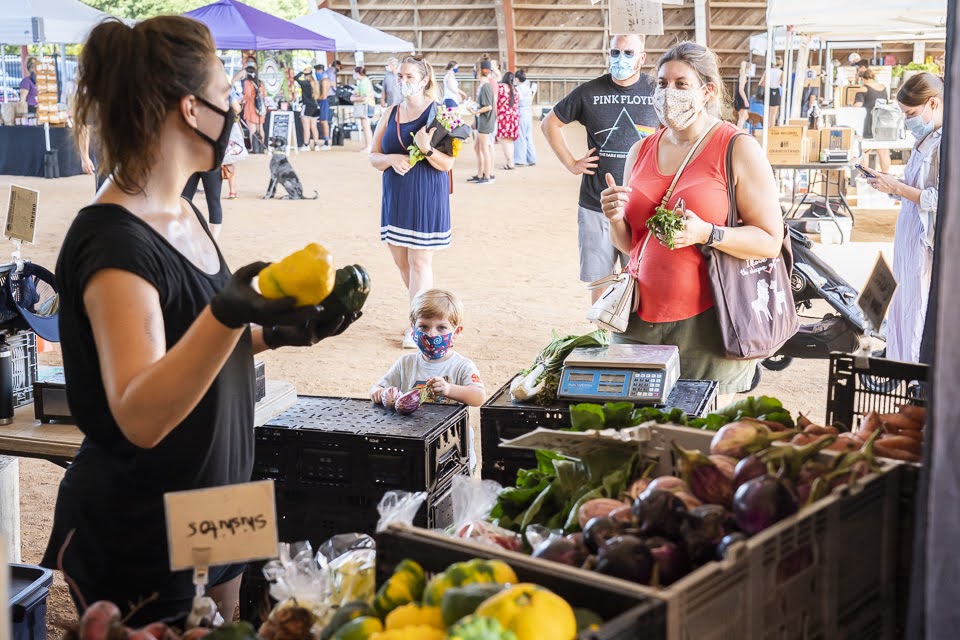
JBG attends 12 different farmers' markets every week. Four of those markets are in Austin City Limits. Others are just outside (like in Sunset Valley) and others still are just outside of Austin in towns like Waco and New Braunfels. We even make the long haul to Houston every Saturday morning for the Memorial Villages Farmers' Market. Each one is a hub of activity. Farmers and ranchers come out of the fields and hills that is their normal office, don a clean shirt, and present to the public the fruits, vegetables, mushrooms, and meats of their labor. These are the best ingredients our region has to offer - the same ingredients that, if you watch closely, you’ll see the city’s top chefs picking up at the Downtown market. The best food starts with quality ingredients, and there is no need to look any further than a local farmers’ market.
But how to make a trip to the market worth your time? How to avoid a crisper drawer full of limp lettuce and a neglected bunch of beets whose rosy bulbs once got your attention?
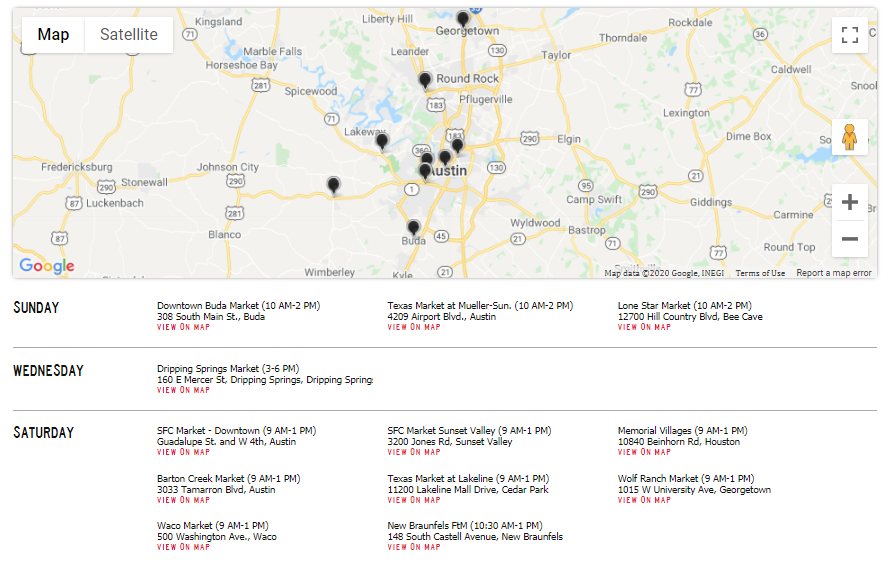 We attend 12 different farmers' markets every week, and each market has its own flavor and style. The one common thread? Every market we attend is a safe shopping experience. Visit us, why don't ya!
We attend 12 different farmers' markets every week, and each market has its own flavor and style. The one common thread? Every market we attend is a safe shopping experience. Visit us, why don't ya!
At Market: The makeup of vendors at a farmers’ market is a lot like the food pyramid - vegetable growers are the cornerstone of any good market, followed by a diverse mix of meat and dairy producers, with some delicious baked goods, prepared foods, specialty drinks, and sticky cinnamon rolls adorning the top. To get the most bang for your buck, try to shop like the pyramid - loading up on vegetables, choosing a couple protein options, and of course, a treat for yourself because, after all, you remembered your reusable bag (maybe) and found a parking spot. Shopping this way at markets is not only economical but it will likely yield a more wholesale plate of food.
Loosen up: Our crop availability often changes from week to week, and even though there were mountains of broccoli at the JBG booth last week, this week there could be none. A trip to the grocery store is usually list-driven, and a trip to the market should be the same… except this list is a loose-list, open to suggestion and inspired by whim. Learn to substitute one seasonal item for another. No parsley? Another tender herb like mint, dill, or cilantro might provide the same freshness to a dish. Celery is hard to grow in Texas, but swiss chard or bok choy stems make a fun substitution. If a recipe calls for toasted almonds, what it’s really asking for is a nutty, salty crunch. Texas pecans or maybe even some savory granola (gasp!) could do the trick. The same goes for cuts of meat. No ground beef? This might be the week to give ground goat a whirl - chances are they will work seamlessly in the same recipe. If you need a bit more control over your grocery list, signup for your local market’s newsletter or follow some farmers on Instagram - both resources will advertise their weekly offerings so you can do a bit of meal-planning before you hit the tents. You can pickup a CSA box at any of the farmers' markets we attend and even customize your box to know exactly what you'll be getting.
 Were you planning on cooking a recipe that called for red radishes? Chances are purple daikon or watermelon radishes will work just as well! Shopping at a market means learning to substitute.
Were you planning on cooking a recipe that called for red radishes? Chances are purple daikon or watermelon radishes will work just as well! Shopping at a market means learning to substitute.
Don’t be timid - talk to your farmers. Our JBG staff woke up at 4:15 just to see you! You know how it can be hard to stop talking about your new baby or very unique dog? That’s kinda how we feel about their vegetables. Plus, our market staff has some serious intel on how best to prepare a peculiar turnip or particular cut of meat. They are the producers, after all.
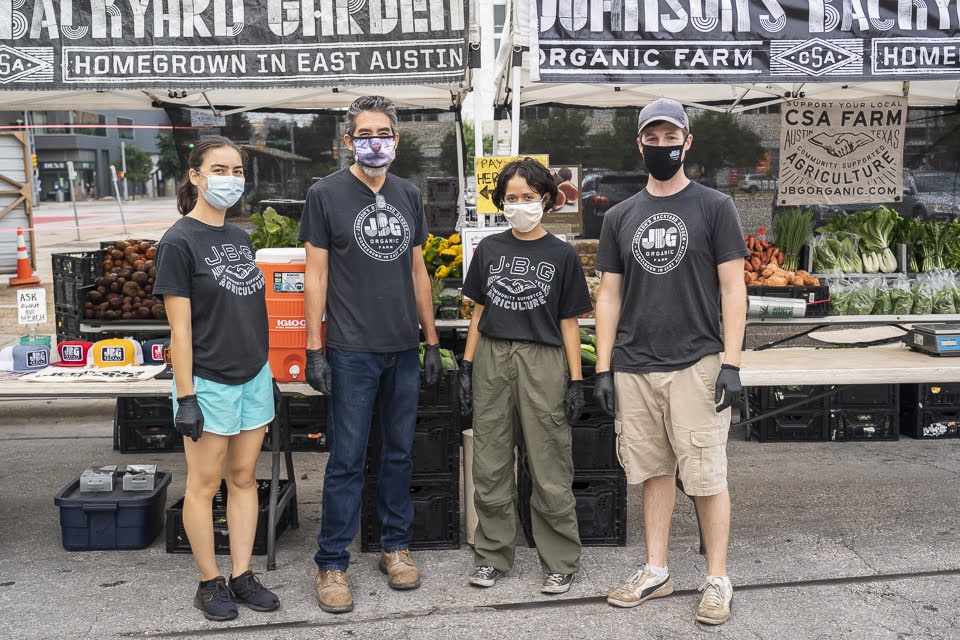 Despite the 4 am alarm clocks, there are always smiles beneath our staffs' masks. We love answering your veggie questions and brainstorming dinner ideas with you! Don't be timid - ask us!
Despite the 4 am alarm clocks, there are always smiles beneath our staffs' masks. We love answering your veggie questions and brainstorming dinner ideas with you! Don't be timid - ask us!
Visit the sample booth and try at least one new thing ... but don’t come home with too many newbies at once. Buy mostly vegetables that you know the name of, adding a few new ones to your repertoire each week. Build your literary of local produce like you would train for a marathon, little by little, and avoid getting home with an entire bag of produce that you have no idea what to do with. This can lead to vegetable fatigue, possible waste, and a veggie shame spiral that might make you wary of market shopping, in general. Novel vegetables should certainly constitute a portion of your haul - cooking is an adventure! We’re looking at you, romanesco! But be reasonable with yourself about the amount of time you have on a given week to experiment in the kitchen.
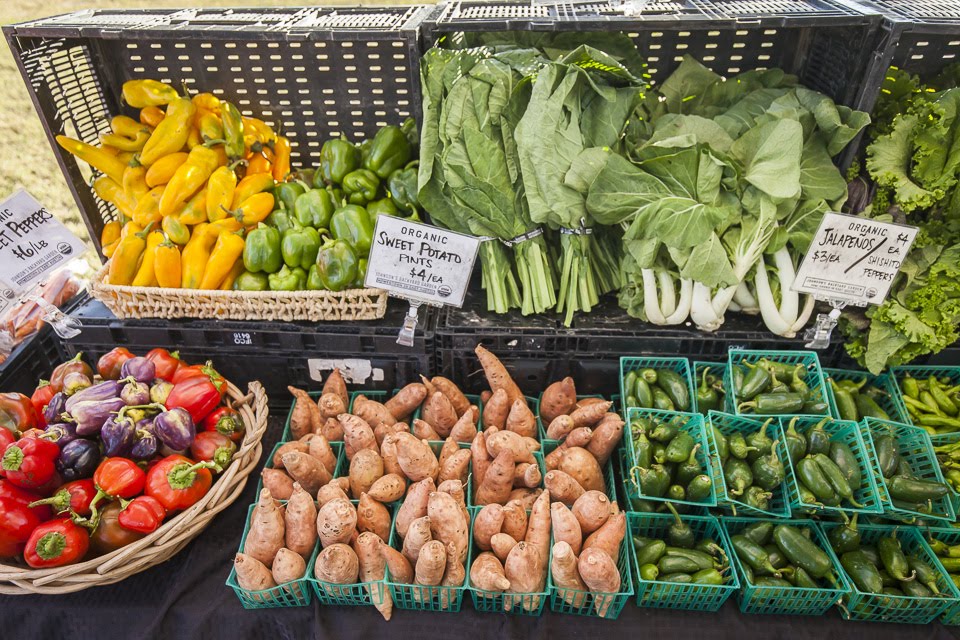
At Home: So much of your success lies in what you do with your market haul once you get home. Food writer Tamar Adler suggests prepping your vegetables as soon as possible, “.... when the memory of the market’s sun and cheerful tents are still in mind.” We agree: take a moment to do some veggie prep, and get your local loot one step closer to consumption. Wash and dry your lettuce or salt your pork chop. In seasons when root crops abound, chop vegetables of similar densities and batch roast in a 400 degree oven. The raw vegetables that you brought home from market are now ready-to-go ingredients - eager to be sprinkled atop a salad, folded into a taco, or stirred into a soup.
Whatever you don’t gobble up right away needs to be properly stored. Thankfully, vegetables from the farmers’ market don’t arrive in your kitchen dripping in single-use plastic… but that doesn’t mean they wouldn’t appreciate a little protection once they make their way to the fridge. From the moment a vegetable is plucked from its roots, it begins to lose moisture. Often, simply putting your produce in a bag in the fridge will help retain that moisture, which would otherwise evaporate into the fridge’s ether. Detach the tops from any bunched root crops, as these too will wick moisture away from the root, leaving you with deflated beets and limp carrots. Store the green tops in a separate bag and congratulate yourself because you just bought two vegetables, in one. If greens or herbs begin to look a little sad, trim the bottom of the bunch and place in a glass of water - just like you would do a bouquet. You’ll be amazed how they can perk right up! Most crops prefer cold storage, but there are a few exceptions: potatoes, alliums, and tomatoes all prefer the countertop. When in doubt, ask google.. or better yet, ask a farmer. Bottom line: store your vegetables correctly and be rewarded with an extended shelf life.
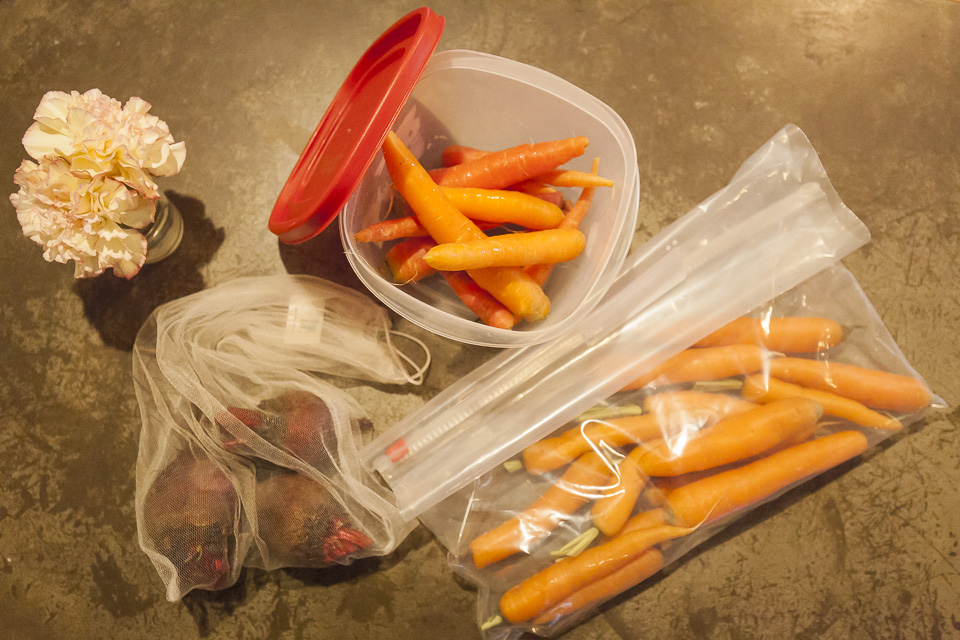
Last but not least, have a few dishes you can whip out at the moment of last resort. Stock your pantry with broth, onions, and garlic and a stew or pureed soup is only a simmer away. With a frozen pie crust in your freezer, you can make a quick and fuss-free quiche or even a hand pie. Whatever it is, find your go-to recipe for using up lingering market vegetables from last week so you’re ready to stock up this week. See you at the market!
 Looking for a soup recipe? How about this curried sweet potato and carrot soup from the JBG archives?
Looking for a soup recipe? How about this curried sweet potato and carrot soup from the JBG archives?





 0 ITEMS IN CART
0 ITEMS IN CART 

